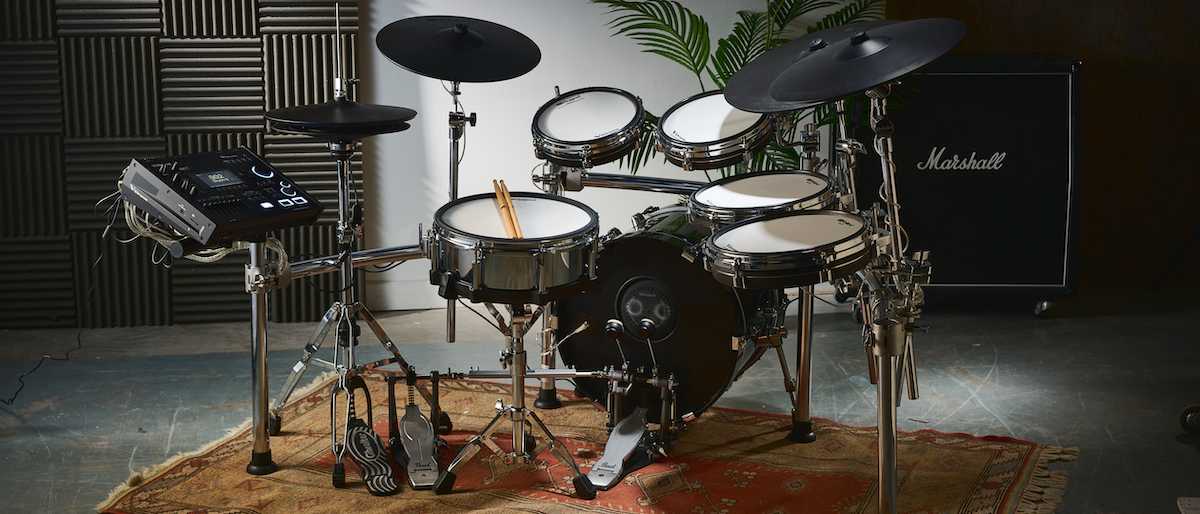MusicRadar Verdict
Not only has Roland come up with a gig-worthy solution to getting realistic acoustic sounds from an electronic drum kit, but it’s done so impressively. These aren’t just ‘good for a module’, they’re genuinely useable, realistic and ultimately very enjoyable to play. The PD140-DSX digital snare is a triumph, and placed next to the VH-14D hi-hats and CY-18DR, bolsters the TD716 with a pretty formidable triple-pronged triggering arsenal. Throw in Soundworks compatibility from within the module and we’ve got to use the phrase ‘game-changer’ for the second or third time this year.
Pros
- +
No-compromise, pro-level electronic drum set
- +
Some of Roland’s best-ever kit sounds
- +
Bluetooth
- +
WiFi/Roland Cloud connectivity
Cons
- -
It doesn’t come cheap
- -
Roland Cloud access requires a subscription beyond the free trial
MusicRadar's got your back
Roland TD716 review: What is it?
Earlier this year, this reviewer was asked to speculate on the future of electronic drum sets. Less crystal ball, and more educated guesses, these predictions were partly based on no-brainer development of technologies that already exist, and partly wishlist-fulfilling goals that we’d all love to see possible from our kits.
The great thing about living in 2024, is that ideas can become a reality - and quickly. Mobile phones might have plateaued with an annual ‘slimmer and lighter’ complacency, and your childhood dream of being able to watch every episode of your favourite show whenever you feel like it is now commonplace. But, there’s still excitement in electronic drum development. Roland has just unveiled its brand new flagship V71 module, which forms the backbone of three new electronic drum kit configurations, collectively titled the 7Series: TD716, TD713 and VAD716.

For this review, Roland sent us the top-level V-Drums kit, the TD716. It comes as a six-drum, three-cymbal and hi-hat setup, as does the TD-713, but the main difference is that the KD-18 bass drum on the TD-716 is a real-shell, 18-inch drum, as opposed to the TD-713’s KD-12 bass drum pad/tower. The TD-716 also includes Roland’s new PD-10X and PD-12X tom pads, where the TD-713 uses PDX-100 pads, as well as a more lightweight rack.
The V71 module takes its place at the top of the Roland brain family, replacing the TD-50X, which in turn was a mid-life upgrade to the TD-50. For the V71, we get a number of all-new benefits, starting with an overhauled sound set. So far, so expected - but the huge news here is that Roland has turned a corner it’s never navigated before, and that is multi-layered, round-robin sampling and playback in a bid to open one door while your DAW closes.
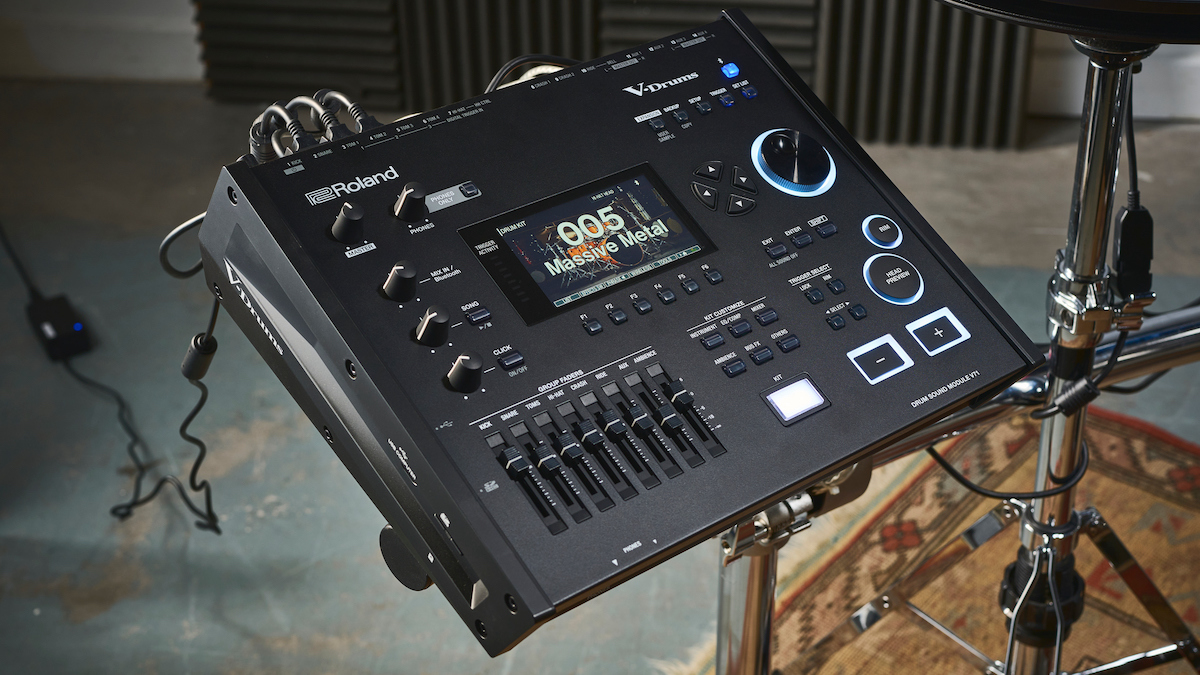
The sound upgrade is joined by a number of other new features including WiFi and Bluetooth connectivity, the latter deemed too ‘consumerist’ in the development of the TD-50/X, but an addition we think will be welcomed by many users.
“Why do I want WiFi? I’m playing drums, not doing emails!” we hear you cry. Well, another new feature is the ability to connect the V71 to Roland Cloud - Roland’s online resource for expanding your gear. E-drum fans will be familiar with DW’s (now part of the Roland stable) DWe kits, and its Soundworks software. Well, if you’ve been waiting for the blossoming of the Roland/DW cross-pollination, here’s your first bud, because (as we’d expect) Roland is using Soundworks to partly-fuel its module sounds.
Before you throw an audio interface in our direction, it’s important to know that this has been implemented differently to how you might expect. While the DWe concept means you have to connect to a computer in order to play the Soundworks plugin (and you’ll need to do that regardless of which kit you use), Roland has mined the Soundworks recording sessions and ported the raw sample data into a module-friendly format. In addition to this, it has carried out new sessions of its own in order to populate the module, with everything captured at 32-bit/192kHz resolution.
Want all the hottest music and gear news, reviews, deals, features and more, direct to your inbox? Sign up here.
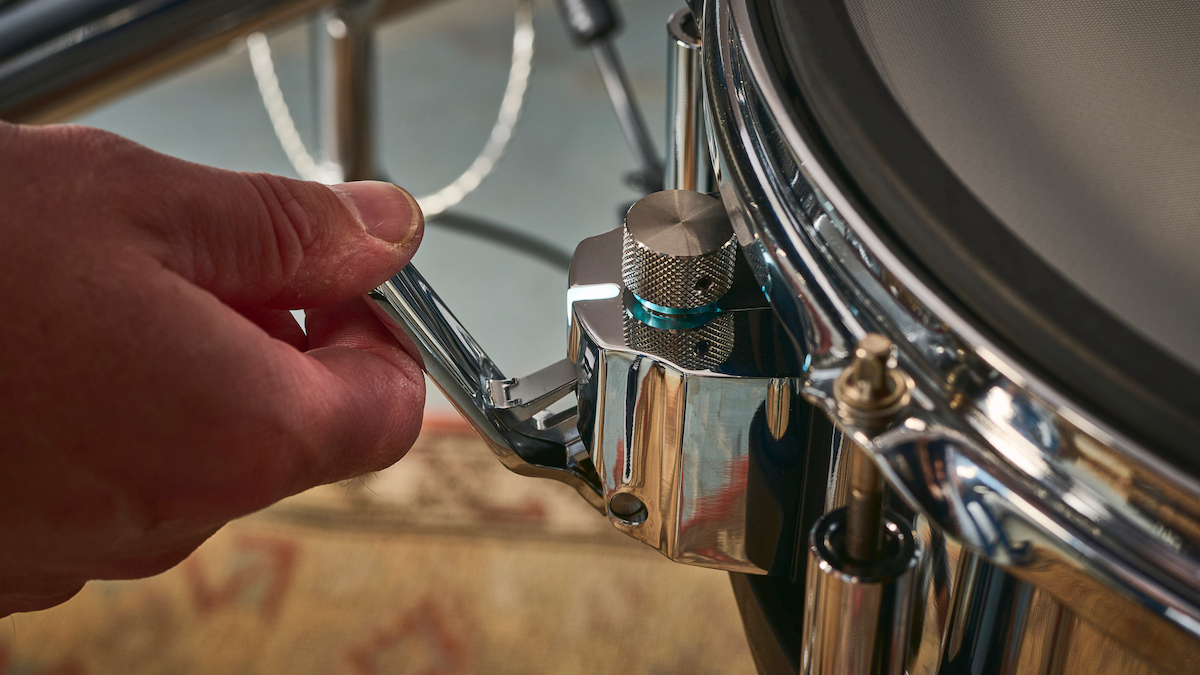
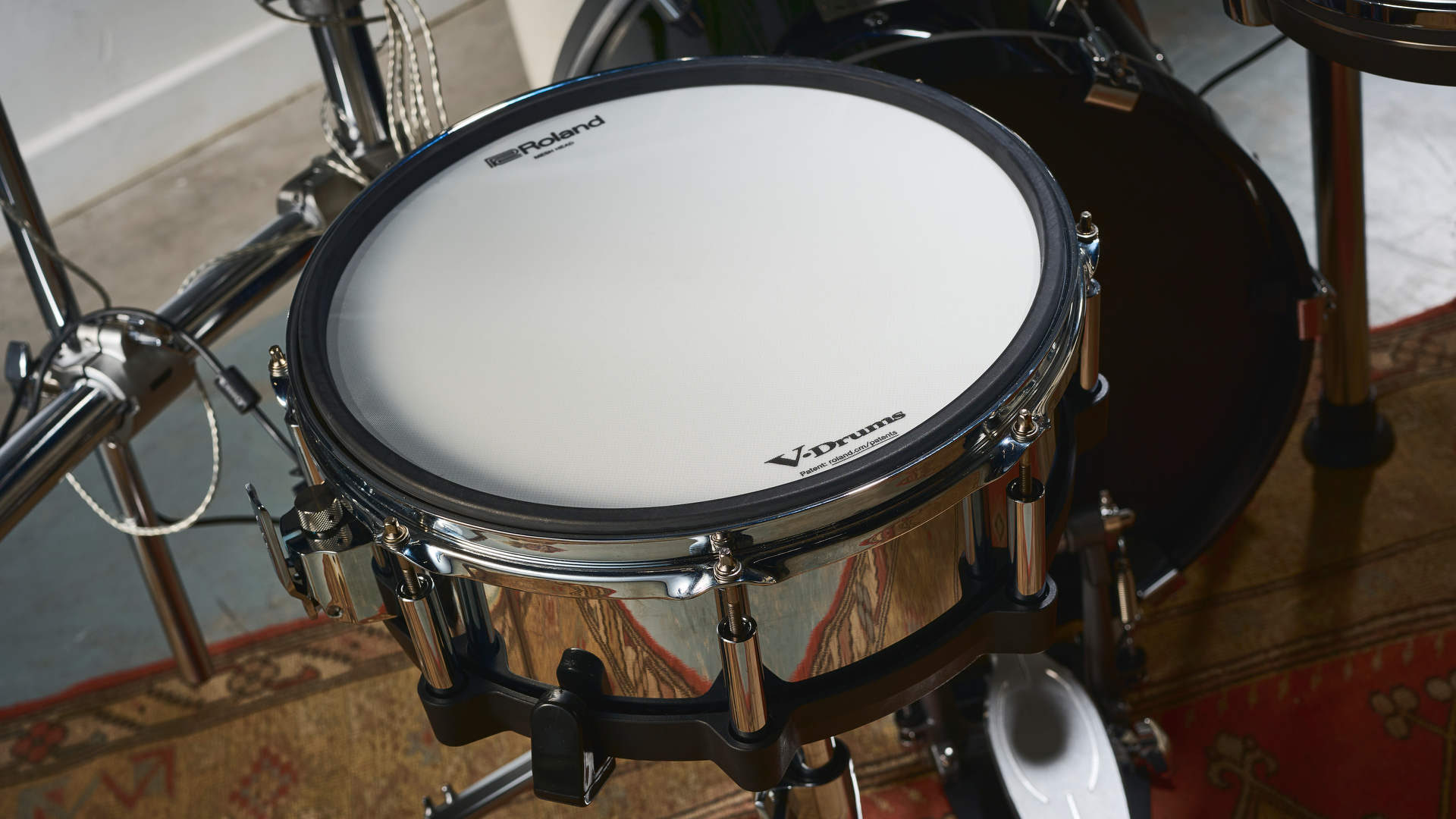

With the TD-50, we saw a key introduction to Roland’s digital triggering technology, which does away with analogue connections for the snare drum, hi-hat and ride cymbal pads in favour of a digital, USB socket. This is continued with the V71, with the rest of the pads connecting via traditional jack cables, and once again (much to our delight) Roland has opted for individual jack connectors at the module end, rather than a pre-wired and tied loom.
But those pads have been overhauled too. First up is the PD140-DSX digital snare drum, which brings all of the same multi-positional benefits as its predecessor (PD-140D), but takes things even further. It starts with the introduction of a digital snare throw-off (one of our favourite features from DWe), allowing us to physically switch the snares on and off as-per an acoustic drum. But Roland has also added a strainer, so tensioning the virtual snare wires to our tastes is now also possible.
The new ‘low-profile’ PD-10X and PD-12X tom pads have also had some light shined on them, and as with the snare, the first visual clue is the repositioning of the rim bumper. The thick, black rubber bezel we’re used to seeing on V-drums pads has now moved to sit inside the metal rim, sitting pretty much flush to the metal in order to avoid stick noise, but from the audience's perspective, it’s much less noticeable. Instead, the pad’s die-cast rims are visible, and while nobody is going to mistake these for ‘real drums’, it says to us that Roland’s not resting on its laurels. The real proof of that, sits underneath the head, where we find the introduction of a four-cone trigger system. The response is still dual-zone (head and rim), but the idea is that more cones/sensors eliminate hotspots, and combined with the sample playback architecture, minimise the risk of dreaded ‘machine-gunning’ when playing the toms.
The drums are joined by the VH-14D hi-hats, CY-18DR ride cymbal, and in our configuration, a pair of CY-16-RT crashes (16 and 14 for the 713), which, while not new, do give us the digital triggering benefits we’ve already mentioned for the hi-hats and ride, along with the physical response and sizing of Roland’s latest and largest thin crashes.
Finally, the whole lot is mounted to Roland’s MDS-STG2 stand, which, as we’ve seen on the TD-50KV2 offers road-ready levels of support, along with a nifty conduit which keeps the cabling - for the most part - hidden along its travels.
Roland TD716 review: Performance
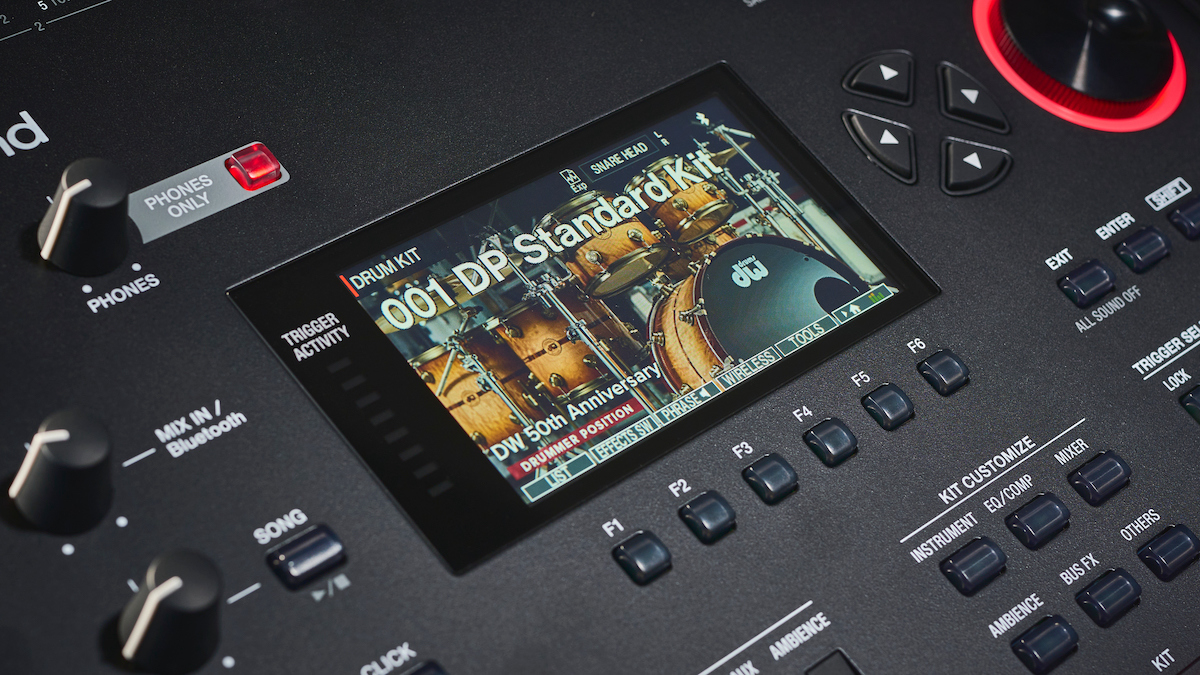
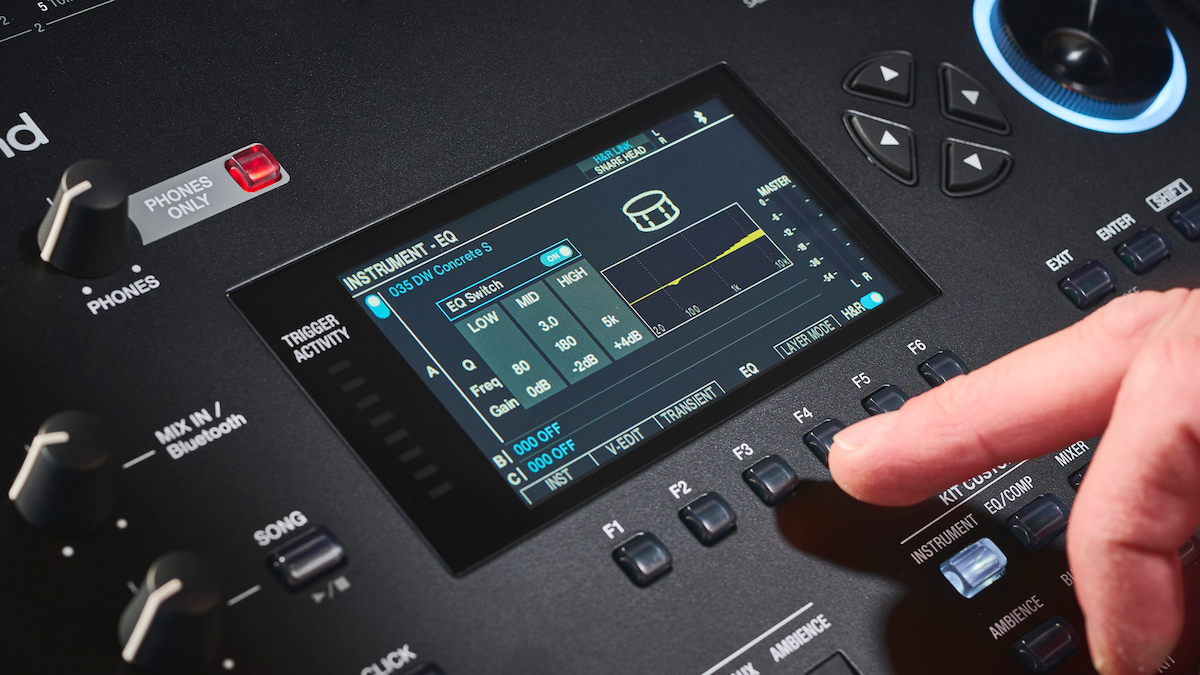
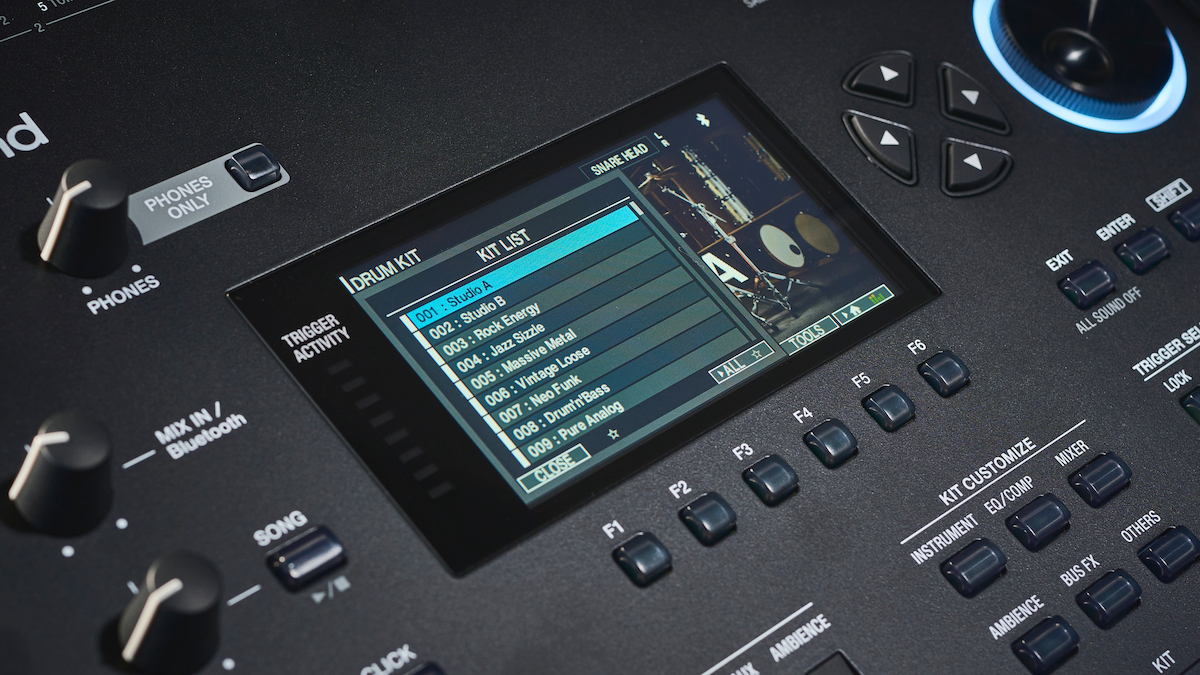
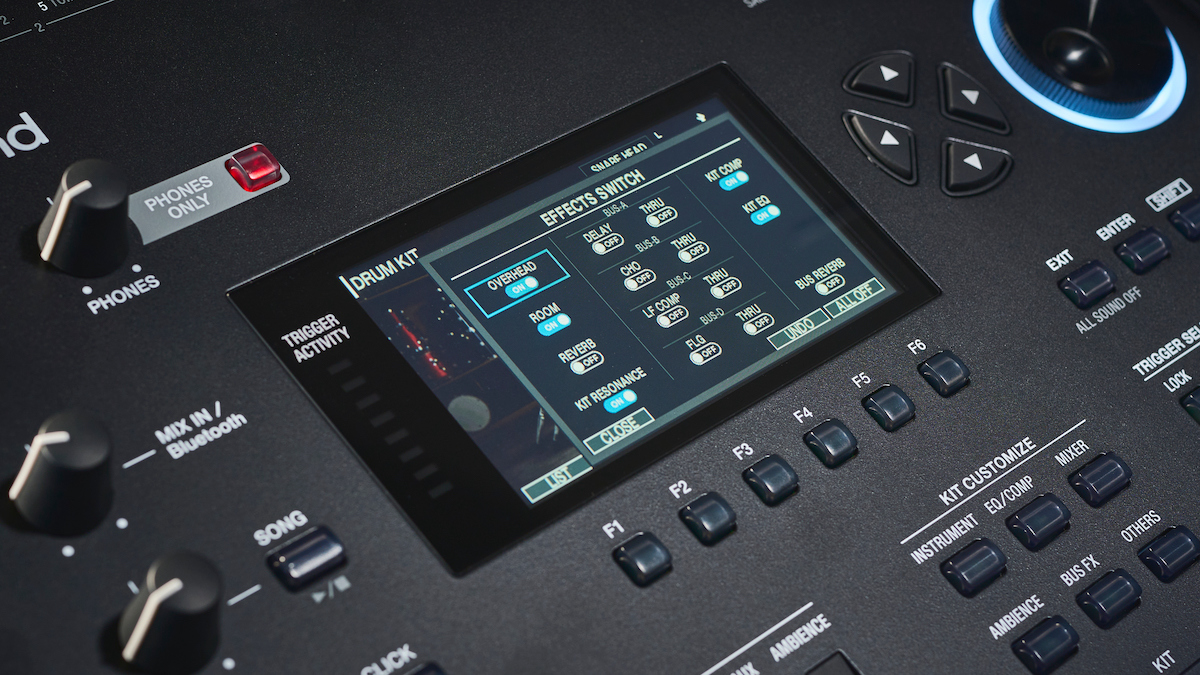

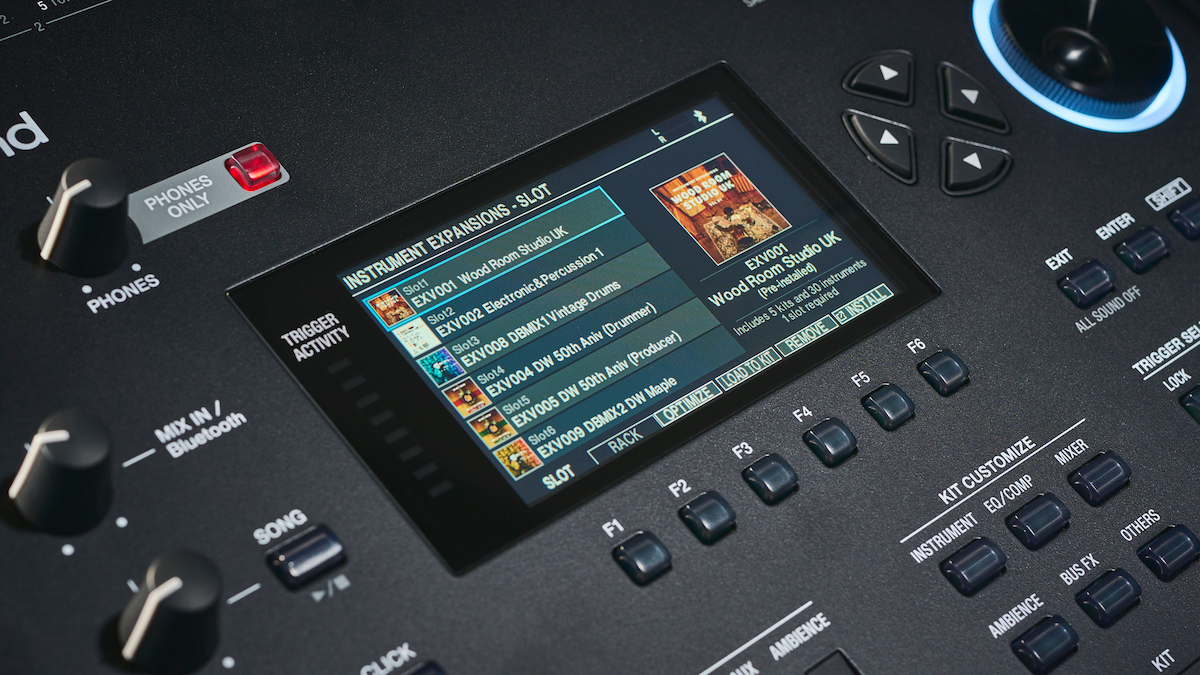
With everything setup, as always, our first stop is to familiarise ourselves with the module. This is made easy by the crisp, colour display which forms the focal point of the V71. At first glance, the module looks to be populated fairly densely, with the volume sliders for each pad, a couple-of-dozen buttons, cursor control, jog wheel and a number of volume controls. But in reality, operation is incredibly easy, especially if you’re already used to Roland’s navigation processes.
The sliders are the Crunchy Nut Corn Flake of module features, in that we’re reminded just how often we want to quickly adjust the volume of a kit element without delving into secondary menus and screens. The same can be said for the other volume controls, which take care of master output, headphone level, aux-in and Bluetooth volume, click and internal song levels. While we can’t say we’d prefer this over a touchscreen for home and practice use, we can appreciate that hands-on, moving controls have their place in a stage scenario, and it’s a push to say it’s better or worse. Just different.
The same things can be said for the six ‘F’ buttons which sit directly below the screen, and the cursor button/jog wheel controls that help us move around. It’s fast, responsive and while some of the deeper editing functions may require a few more button-presses to alter parameters, at no point did we feel bogged-down in menu-surfing. The layout and accompanying visual representations - from the graphic display of kit setups to the plugin-style representation of effects processors - make us feel like we’re doing exactly what we are: operating a pro-level drum module.
Without a doubt, one of our favourite new features on the TD716 is the PD14-DSX snare drum. Our initial preconceptions of the head/rim bumper layout had us slightly sceptical about how it would respond physically. Depending on your playing style, rimshots are either your go-to backbeat articulation, or an occasional accent, but in both contexts, you need the fulcrum-like placement of a rim to realistically execute it. Physically, we found it to respond exactly as designed - out of the way when you’re not attempting to hit it, but right there when you need it.
Likewise, there’s zero barrier to executing cross-stick sounds: no switching of modes, no need to apply extra pressure to the head. You simply play the crosstick as you would on a snare drum, and in the case of nearly every acoustic kit preset, are rewarded with a beautifully realistic, woody sample. If you dislike the ‘Everybody Hurts’ ballad sample that we’re often confronted with all too often, you’ll love this.
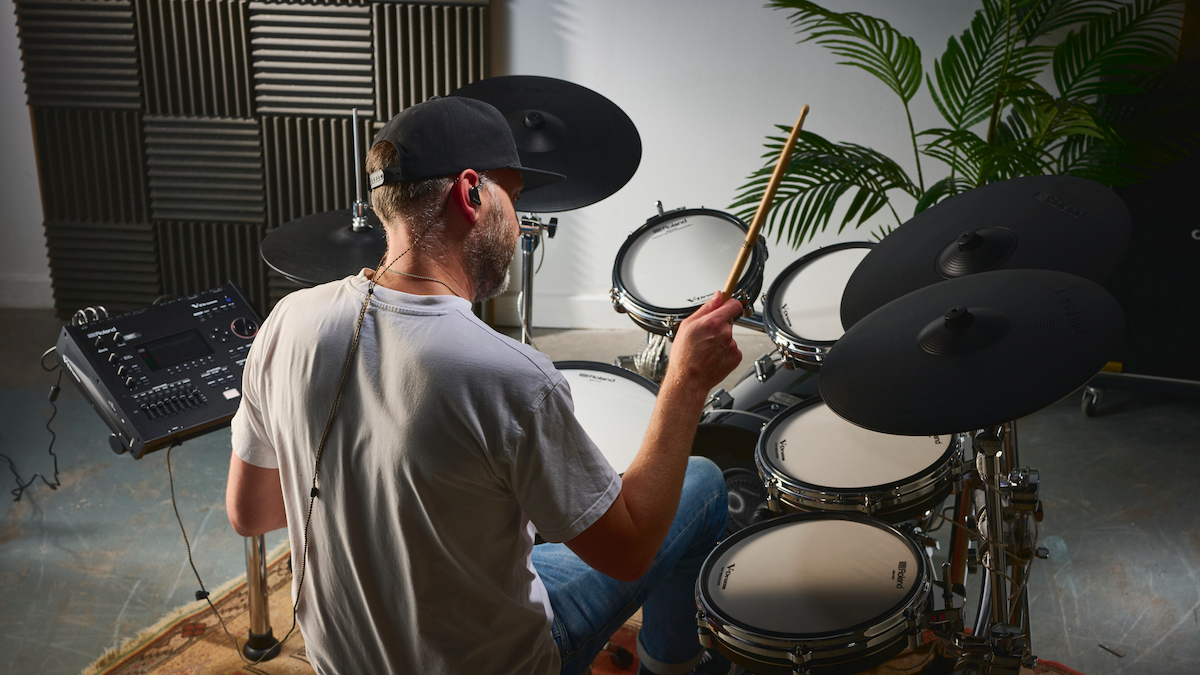
But the jewel in the PD14-DSX’s crown is the throw-off. Danny Carey impersonations, drum-free extended song intros and faux-timbale sounds aside, it’s not that often that you’re required to turn the snares off and on quickly. But the fact that it’s here is irresistibly addictive to play with, and (to our minds) gives a clue as to how seriously Roland is taking the task of transitioning between acoustic/electronic drums.
The icing on the cake is the strainer, which actually forms a lot more substance. The effect of adjusting the virtual snares is, at times, subtle, and depends largely on the wider processing (room sounds, reverb etc) of the kit. But it’s nothing short of a brilliant addition. On the more organic ‘kit-in-a-room’ presets, it’s very noticable, and we could take our snare drum sounds from sustained and mellow to tight and almost choked, just like an acoustic snare.
There’s a lot to get into with this kit. But, we can’t really go any further without talking about sounds. As the top dog in the e-kit yard, Roland is often under the microscope. The last couple of generations of V-Drums have come with a huge focus on triggering technology, build, dimensions and response. But as VSTs become ubiquitous, and pressure mounts from competitors, it seems that Roland’s head is firmly above the sand. The presets housed within the V71 module are genuinely impressive to play, and just as with the Alesis Strata Prime I tested earlier this year, it doesn’t take long to forget that you’re playing sounds from a drum module rather than a computer.
It’s loaded with authenticity, and plenty of variation all hinging around acoustic kit presets which sound brilliant for jazz, funk, rock and metal. The snares are dynamic and lively, with acoustic-style ring where you want it (removable via V-Editing where you don’t), and each one is processed appropriately. Gone is the synthetic, loose attack present at times in modules from Roland - and to be fair, other manufacturers - replaced with punchy, transient-heavy processing while remaining natural.
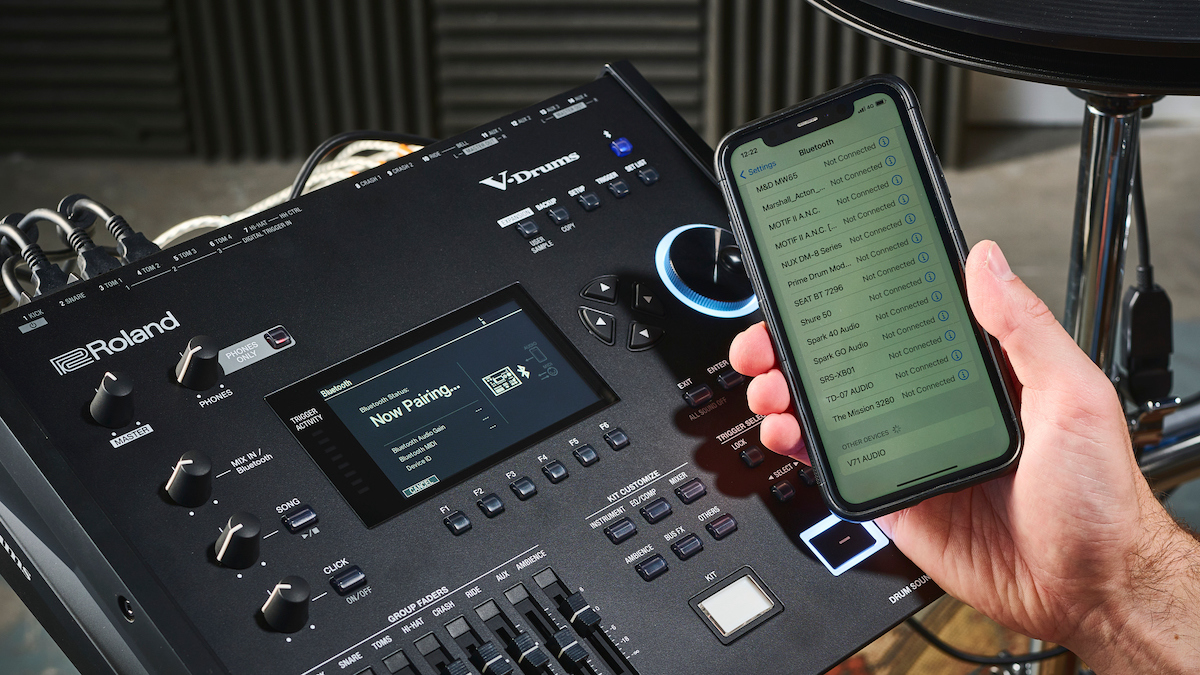
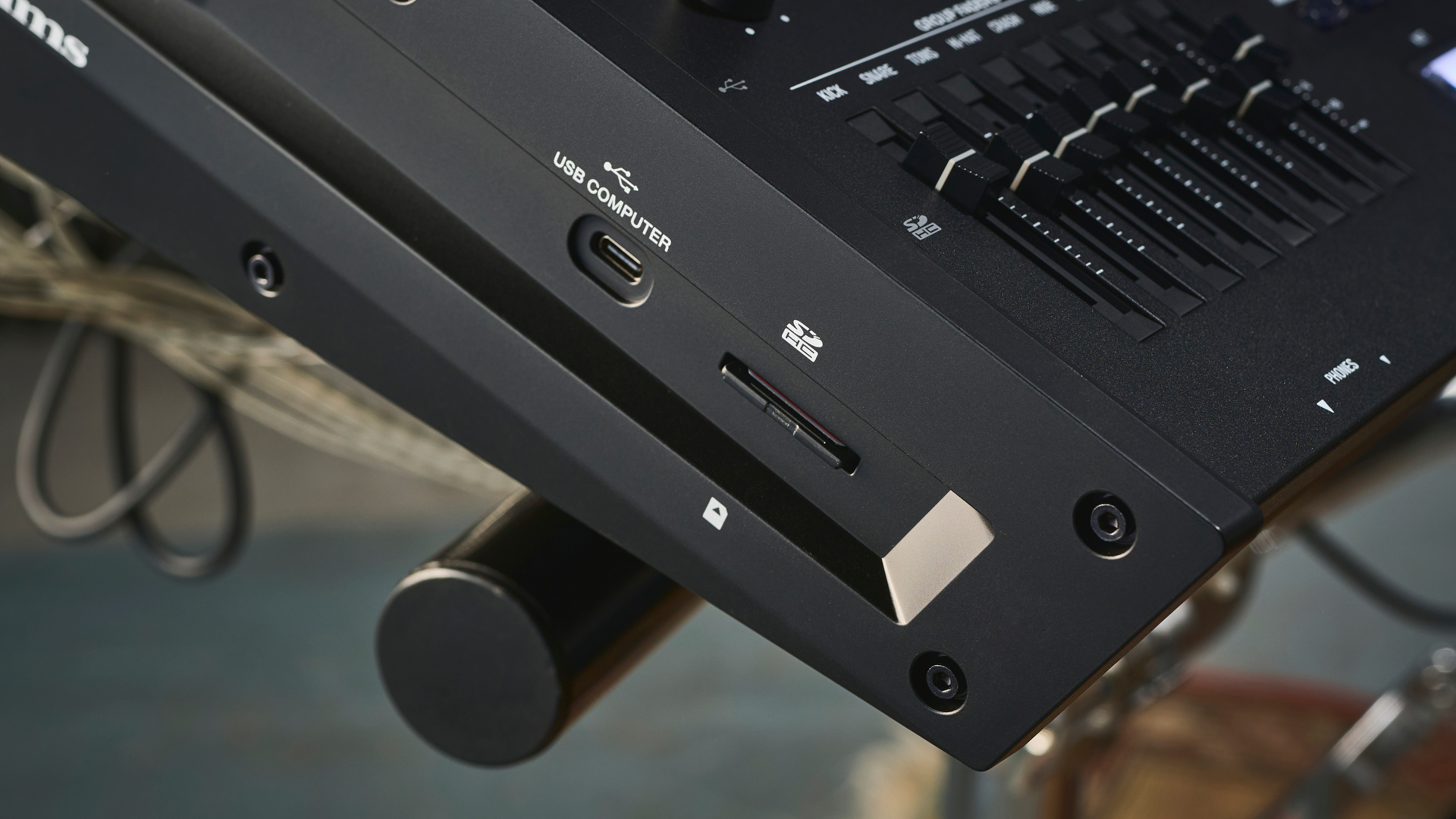
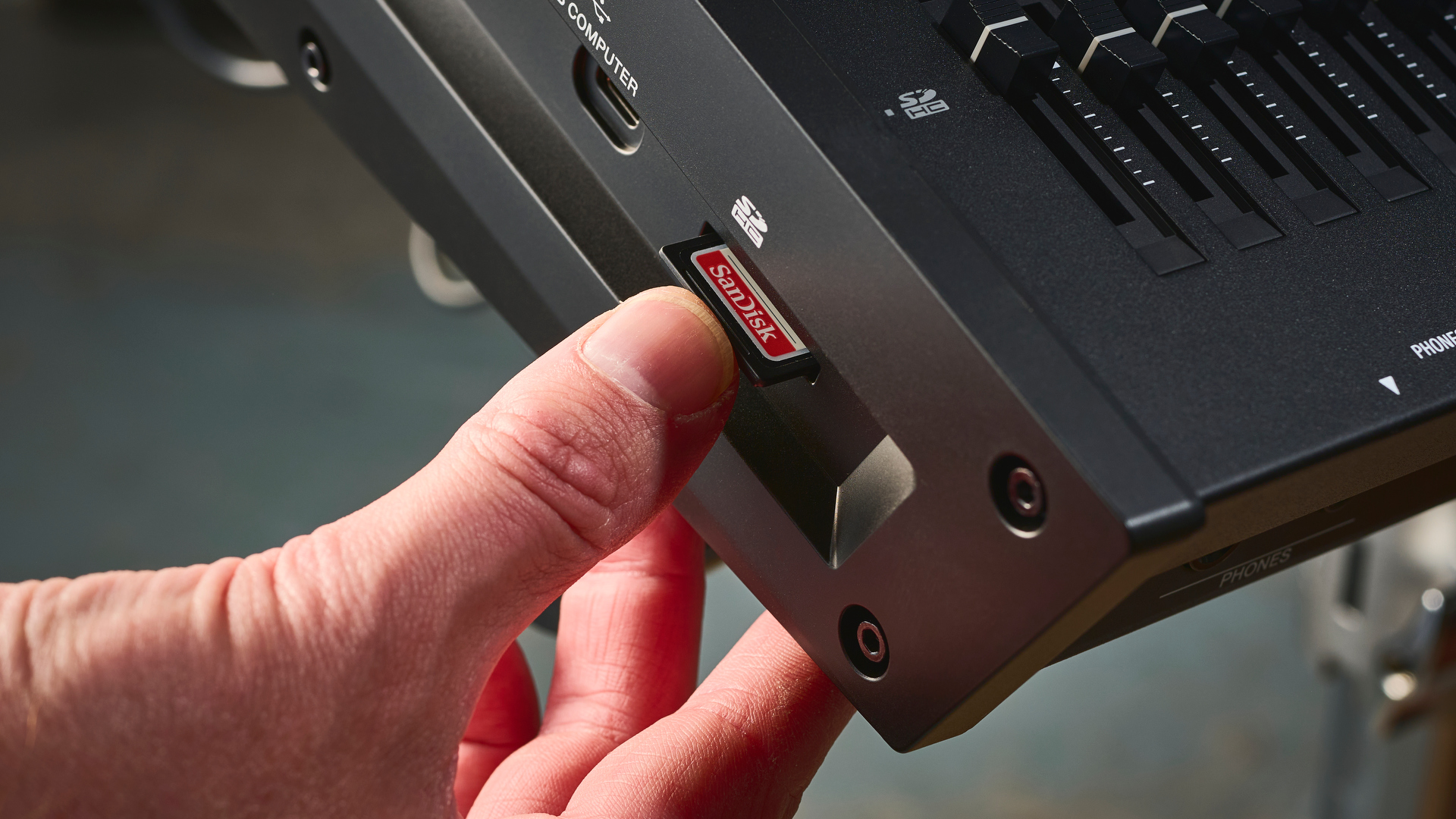
There’s body and character too, with bass drums delivering proper acoustic thump and slap, without sounding like they’ve been cooked-up in a lab. The same can be said of the more ambient-sounding kits, where the reverb and room sounds are full and natural sounding.
There’s a lot more to responsive sounds than just the samples. There’s a cohesion between the triggering systems and solutions that are in place, and the playback engine. Round-robin sounds mean that you’re never hearing the same sample played back-to-back, so just as there are countless variations available when you hit an acoustic drum, Roland has equipped the V71 with up to 16,000 variations on the digital pad voices, when you strike the pad, it’ll pick from this pool to make sure that there’s never consecutive playback of the same sample.
At the time that we had the TD716 for review, the Roland Cloud functionality was unavailable for testing. This is understandable given that this is Roland’s top-secret flagship launch, and access to a user-accessed web-based portal would risk a pretty serious leak. Instead, we had the same resources loaded onto an SD card. The kits are scrollable, with previews available before you choose to import them. These are organised as packs, with each pack containing multiple kits.
Importing is easy, with simple option prompts between the selection buttons and cursor. Loading the kits from the card into the module takes a few seconds - obviously with the sounds sitting natively on a card there’s no download speed to contend with. But even with that factored in, it’s quick, convenient and will continue to evolve.
Purchasers of the TD716 will get a time-limited trial of a Premium Roland Cloud account, and during this time you can download sound packs, individual instruments such as samples of the DW Tru-Cast snare as well as jam tracks to play along with.
Roland TD716 review: Verdict
There were a few questions in our head that we were hoping the TD716 would answer before we got to play it. First was regarding sounds - not only has Roland come up with a gig-worthy solution to getting realistic acoustic sounds from an electronic drum kit, but it’s done so impressively. These aren’t just ‘good for a module’, they’re genuinely useable, realistic and ultimately very enjoyable to play. Not only that, but the presets are tasteful and very well put together. There’s no learning curve to getting a great sound, because they’ve already been set up and optimised for you - and as we type this, it’s a reminder that at no point during our review was it necessary to go near trigger configuration menus.
The next questions were how would the DWe technology influence Roland’s next big output? We got our answer, and it’s ‘Very positively’. The PD140-DSX is a triumph, and placed next to the VH-14D hi-hats and CY-18DR, bolsters the TD716 with a pretty formidable triple-pronged triggering arsenal. Throw in Soundworks compatibility from within the module and we’ve got to use the phrase ‘game-changer’ for the second or third time this year.
Finally, for TD-50/50X or TD-27 owners, is it worth the upgrade? If you’ve recently purchased a top-end Roland module or kit then we’re sorry to be the bearers of bad news, but it’s a blunt ‘Yes’.
The TD716, and more widely, the V71 module are not cheap. If you’re thinking of saving some money and going for the TD713 instead, you’ll need to be prepared to make some concessions on the tom and bass drum pads and rack, but it is a lower entry point. There’s very little to fault with the whole configuration, and it makes us excited to try the VAD versions. Phones might just be ‘slimmer and lighter’ and we’re still waiting on the hoverboards Michael J Fox promised us, but for now it appears that Roland has put a big crack in the nut its fans have been hoping for.
Roland TD716 review: Video demos
MusicRadar

Roland
Roland TD716 review: Specifications
- Pads: 1x KD-18 bass drum, PD14-DSX snare drum, 2x PD-10X, 2x PD-12X tom pads, VH-14D hi-hat, CY-18DR ride cymbal 2x CY-16 RT crash cymbals
- Module: Roland V71
- Kits: 200 (70 presets plus expansion via Roland Cloud)
- Connectivity: 14x trigger inputs, 3x digital trigger inputs, master L/R output, 8x direct outs (4 mono, 4 stereo, all balanced) headphone outputs x2, mix input, USB C, Bluetooth, WiFi, SD Card
- Stand: MDS-STG2
- Contact: Roland

Stuart has been working for guitar publications since 2008, beginning his career as Reviews Editor for Total Guitar before becoming Editor for six years. During this time, he and the team brought the magazine into the modern age with digital editions, a Youtube channel and the Apple chart-bothering Total Guitar Podcast. Stuart has also served as a freelance writer for Guitar World, Guitarist and MusicRadar reviewing hundreds of products spanning everything from acoustic guitars to valve amps, modelers and plugins. When not spouting his opinions on the best new gear, Stuart has been reminded on many occasions that the 'never meet your heroes' rule is entirely wrong, clocking-up interviews with the likes of Eddie Van Halen, Foo Fighters, Green Day and many, many more.
